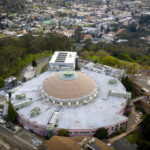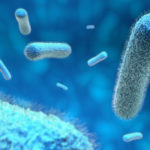Data gathered at Berkeley Lab’s Advanced Light Source (ALS) by an international team of researchers indicate that antibodies derived from SARS survivors could potently block entry of SARS-CoV-2 and other closely related coronaviruses into host cells. Such antibodies could be used as a preventative treatment or as a post-exposure therapy.
Ralston and Allaire Step Into New Roles
Corie Ralston and Marc Allaire, both staff scientists, have been promoted to new leadership positions. Ralston has assumed the position of Facility Director for the Biological Nanostructures Facility at the Molecular Foundry. Allaire has been appointed Head of the Molecular Biophysics and Integrated Bioimaging (MBIB) Division’s Berkeley Center for Structural Biology (BCSB). The BCSB manages six macromolecular crystallography beamlines at the Advanced Light Source (ALS).
Staff at ALS Mobilize to Support COVID-19-related Research
On March 31, a small team of staff at Berkeley Lab’s Advanced Light Source (ALS), which produces beams of X-rays and other types of light to support a wide variety of experiments for researchers around the world, launched several COVID-19-related experiments for other scientists who controlled the work remotely. X-rays allow researchers to map out the 3D structure of proteins relevant to diseases at the scale of molecules and atoms. Structural studies can lead to drugs that target and attack the virus while leaving other vital systems intact, for example, or that can otherwise improve the body’s defenses against the virus.
X-Ray Technology Sheds New Light on Antibiotic Synthesis
Atomic-scale structural analyses performed at Berkeley Lab’s Advanced Light Source (ALS) are helping scientists understand the inner workings of the enzyme “assembly lines” that microbes use to produce an important class of compounds, many of which have uses as antibiotics, antifungals, and immunosuppressants.
These cellular machines, known as nonribosomal peptide synthetases (NRPSs), are large, multi-enzyme clusters that synthesize compounds by passing a precursor molecule from one module to the next, with each “station” catalyzing a change in the molecule. In the past decade, researchers have learned a great deal about how individual NRPS modules work, but an understanding of how the assembly lines function as a whole has been lacking. In the hopes of eventually engineering custom NRPSs to make new and improved medicines, a team led by McGill University began investigating the bacterial NRPS that synthesizes the antibiotic gramicidin.
Berkeley Lab Helps Reveal How Dinosaur Blood Vessels Can Preserve Through the Ages
A team of scientists led by Elizabeth Boatman at the University of Wisconsin Stout used X-ray imaging and spectromicroscopy performed at Berkeley Lab’s Advanced Light Source (ALS) to demonstrate how soft tissue structures may be preserved in dinosaur bones – countering the long-standing scientific dogma that protein-based body parts cannot survive more than 1 million years.
In their paper, now published in Scientific Reports, the team analyzed a sample from a 66-million-year-old Tyrannosaurus rex tibia to provide evidence that vertebrate blood vessels – collagen and elastin structures that don’t fossilize like mineral-based bone – may persist across geologic time through two natural, protein-fusing “cross-linking” processes called Fenton chemistry and glycation.
- « Previous Page
- 1
- …
- 8
- 9
- 10
- 11
- 12
- …
- 19
- Next Page »
Was this page useful?








